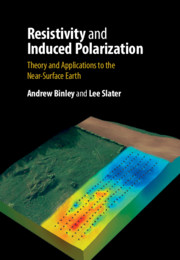Book contents
- Resistivity and Induced Polarization
- Reviews
- Resistivity and Induced Polarization
- Copyright page
- Contents
- Preface
- Acknowledgements
- Symbols
- 1 Introduction
- 2 Electrical Properties of the Near-Surface Earth
- 3 Instrumentation and Laboratory Measurements
- 4 Field-Scale Data Acquisition
- 5 Forward and Inverse Modelling
- 6 Case Studies
- 7 Future Developments
- Appendix A Modelling Tools
- References
- Index
- Plate Section (PDF Only)
- References
References
Published online by Cambridge University Press: 17 December 2020
- Resistivity and Induced Polarization
- Reviews
- Resistivity and Induced Polarization
- Copyright page
- Contents
- Preface
- Acknowledgements
- Symbols
- 1 Introduction
- 2 Electrical Properties of the Near-Surface Earth
- 3 Instrumentation and Laboratory Measurements
- 4 Field-Scale Data Acquisition
- 5 Forward and Inverse Modelling
- 6 Case Studies
- 7 Future Developments
- Appendix A Modelling Tools
- References
- Index
- Plate Section (PDF Only)
- References
- Type
- Chapter
- Information
- Resistivity and Induced PolarizationTheory and Applications to the Near-Surface Earth, pp. 335 - 384Publisher: Cambridge University PressPrint publication year: 2020

